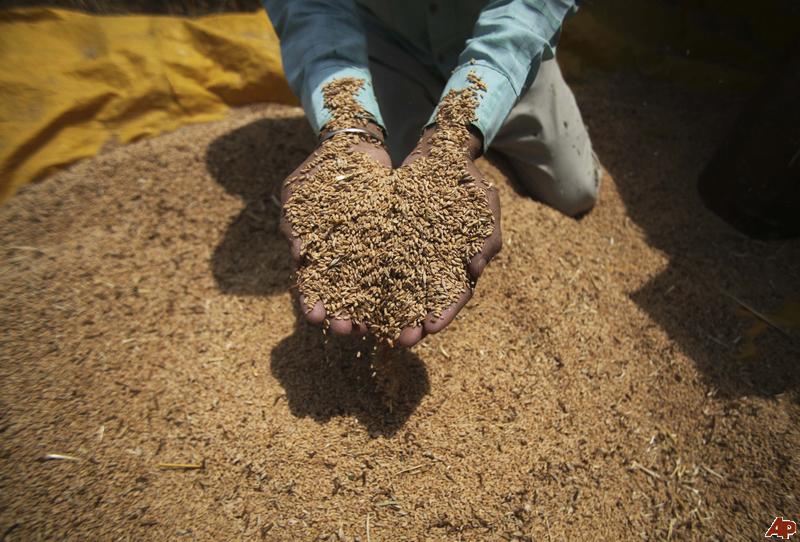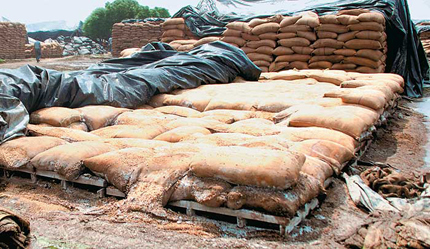In the last ten years that the Congress led United Progressive Alliance(UPA) government has run this country, its solution for almost every socio-economic problem facing this country, has been bigger government. This was a practice followed by the erstwhile Communist countries all over the world, particularly the Soviet Union. And there was a basic reason behind why the system did not work.
Diane Coyle explains this point in her new book GDP – A Brief But Affectionate History. As she writes “The communist countries had centrally planned economies, not market economies. Ministries in Moscow set the figures for the total number of all items to be produced in the economy and cascaded that down to specific production quotas for different industries and individual factories. With the benefit of hindsight we can see that the idea bureaucrats could possibly known enough about a large, complex economy to plan it from the center successfully is ludicrous.”
Coyle further explains why central planning did not work. “Individual factories were set output targets by the planning ministry. These were expressed in terms of volume—number of TV sets or pairs of shoes—or even weight. Targets of this kind are easy to meet. It doesn’t matter what the shoes are like, whether they are durable, comfortable, in the right sizes for the majority of wearers, or stylish. It doesn’t matter whether the TV sets work after six months or if the panel at the back constantly falls off.”
While India is no longer centrally planned to this extent, but our love for central planning has persisted. Take the case of the Right to Education which was introduced in 2009. At the heart of the Act is a noble idea of ensuring that education is a human right that should be free and compulsory for all children between the ages of 6 and 14.
But like is the case with all big bang centrally planned initiatives the Act tries to achieve too many things at once. It ordered schools to have infrastructure like playgrounds and toilets. Again noble ideas which easy to mandate by law, but difficult to implement immediately.
Many “bottom of the pyramid” kind of private schools have been providing education at a rock bottom fee. If they are asked to suddenly create adequate infrastructure which meets the criteria set under Right to Education, their cost of operation goes up. Their only option is to pass on this cost and increase the fee that they charge.
The trouble is that even though most parents want to educate their children, they may not be in a position to pay the higher fees.A recent article on www.bbc.com deals with precisely this issue. It quotes Gitanjali Krishnan, a teacher in a school in Panchsheel Enclave in New Delhi as saying that the school would have to triple student fees to meet the criteria set under the Right to Education. And this is something that parents of the children studying in the school won’t be able to afford. “Our parents are the poorest of the poor, labourers and migrant workers, they won’t be able to afford it,” she said.
This has led to a scenario where schools are simply shutting down. “Baladevan Rangaraju, director of think tank India Institute, who has been monitoring media reports, has counted 2,692 schools shut and 17,871 at risk,” the BBC article said.
State governments are also shutting down schools which don’t meet the criteria set under Right to Education. The thinking among bureaucrats seems to be that in private schools the quality of teaching is not guaranteed. This is a rather stupid argument given that if the teaching in government schools was good, then the government employees and bureaucrats would be sending their sons and daughters to these schools, which is not the case.
Also, shutting down schools is not a solution. Even if the education offered by private schools is not upto the mark, isn’t some education better than no education? As Parth J Shah, founder president of the Centre for Civil Society writes in a blog “Actually many government schools themselves would not be able to meet the rigid input norms((like playground, classroom size and teacher-student ratio) that the Right to Education has mandated.”
Further, what the Right to Education does like all centrally sponsored scheme is to set a target. And the target is to complete the syllabus. Economist Abhijit Banerjee talked about this sometime back. He conducted a small experiment in Bihar and the results were astonishing. “We did one experiment in Bihar which was with government school teachers. This was in summer around two years ago. The teachers were asked that instead of teaching like you usually teach, your job for the next six weeks is to get the children to learn some basic skills. If they can’t read, teach them to read. If they can’t do math, teach them to do math. At the end of six weeks, these teachers were given a small stipend. They had also been given a couple of days of training. At the end of six weeks, the children had closed half the gap between the best performing children and the worst performing children. They had really improved enormously,” said Banerjee.
So what was happening here? The teachers did not have to complete the syllabus in this case. They had to teach students what the students did not know. As Banerjee put it “The reason was they were asked to do a job that actually made sense. They were asked to teach the children what they don’t know. The usual jobs teachers are asked to do is teach the syllabus – which is very different. Under the Right to Education Act, every year you are supposed to cover the syllabus,” said Banerjee.
Central planning essentially tries to implement what should be the best outcome. But that is easier mandated by the law than implemented in reality. As Banerjee put it “One thing that we forget is that the perfect is the enemy of the good. We are trying to have an education system that is perfect and that every child should come out with wisdom at the end of it and as a result they learn nothing.”
Moving beyond the Right to Education, let’s take the case of the food security scheme, which aims at providing subsidised rice and wheat to nearly 82 crore Indians or 67% of the total population. Again, a big Act which tries to achieve the impossible.
Government data over the years has clearly shown that the percentage of hungry people is very low. An article in the Mint points out “A February[2013] report of the National Sample Survey Office (NSSO) shows the proportion of people not getting two square meals a day dropped to about 1% in rural India and 0.4% in urban India in 2009-10. Interestingly, the average cereal consumption of families who reported that they went hungry in some months of the year (in the month preceding the survey) was roughly equal to the average cereal consumption of those who reported receiving adequate meals throughout the year.”
Hence, what people need is not subsidised rice and wheat, but food that is more nutritious. Howarth Bouis, director of HarvestPlus, International Food Policy Research Institute (IFPRI), made a very interesting point in an interview to the Mint in 2013. “If you look at all the other food groups such as fruits, vegetables, lentils, and animal products other than milk, you will find a steady increase in prices over the past 40 years. So it has become more difficult for the poor to afford food that is dense in minerals and vitamins,” he said.
No steps have been taken to tackle this problem. Over and above this other factors also need to be taken into account. As a research paper titled National Food Security Bill: Challenges and Options authored by economists belonging to the belonging to the Commission for Agricultural Costs and Prices (CACP), which is a part of the Ministry of Agriculture points out “Women’s education, access to clean drinking water, availability of hygienic sanitation facilities are the prime prerequisites for improved nutrition. It needs to be recognised that malnutrition is a multi-dimensional problem and needs a multi-pronged strategy.”
This means taking many small steps in the right direction, which necessarily don’t involve big government and more central planning.
To conclude, the Congress led UPA government is spending its last six weeks in power. And if there is one lesson it can draw from its last ten years in power is that Soviet style central planning doesn’t really work any more and perhaps it never did.
The article originally appeared on www.FirstBiz.com on March 27, 2014
(Vivek Kaul is a writer. He tweets @kaul_vivek)




